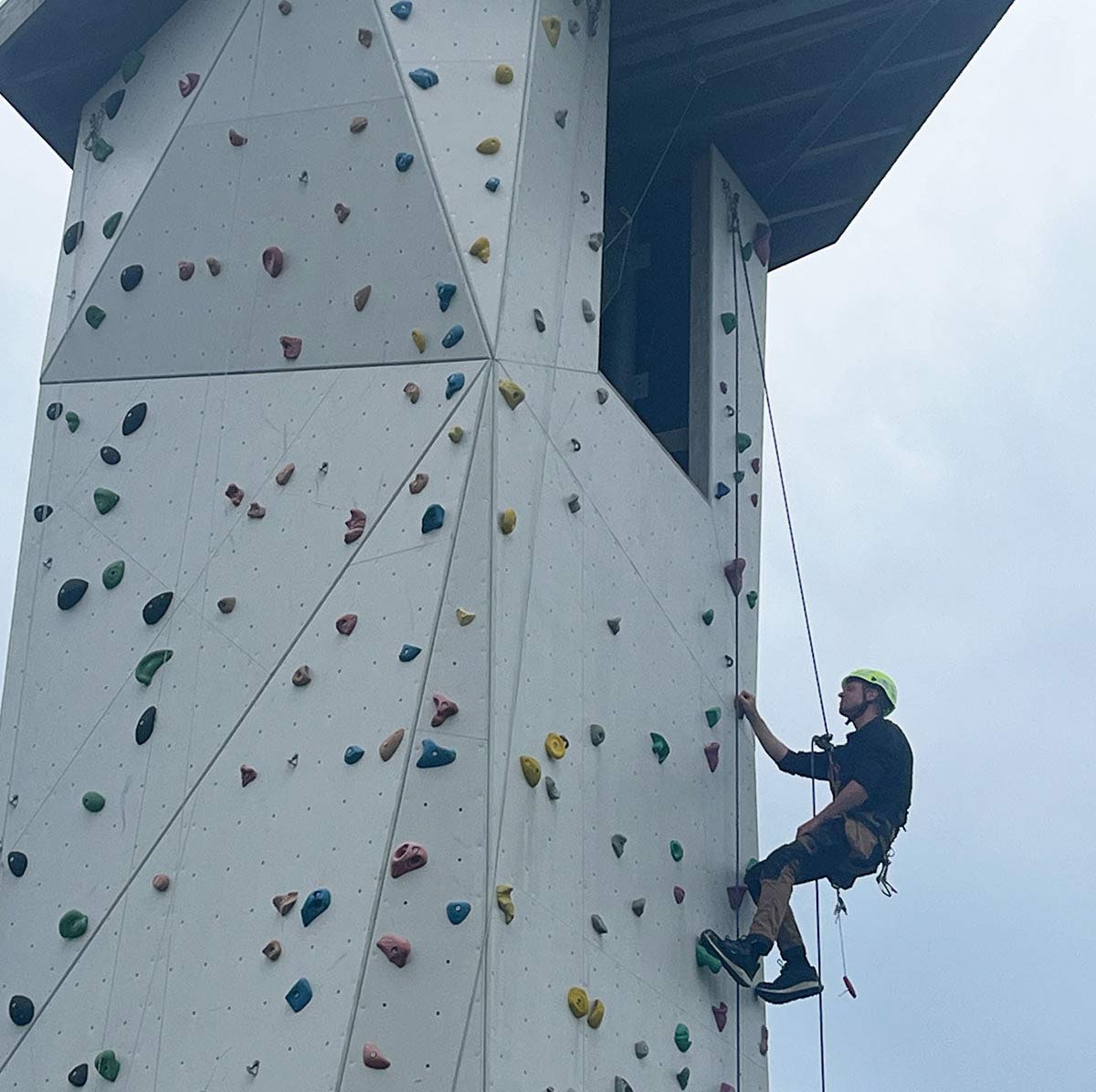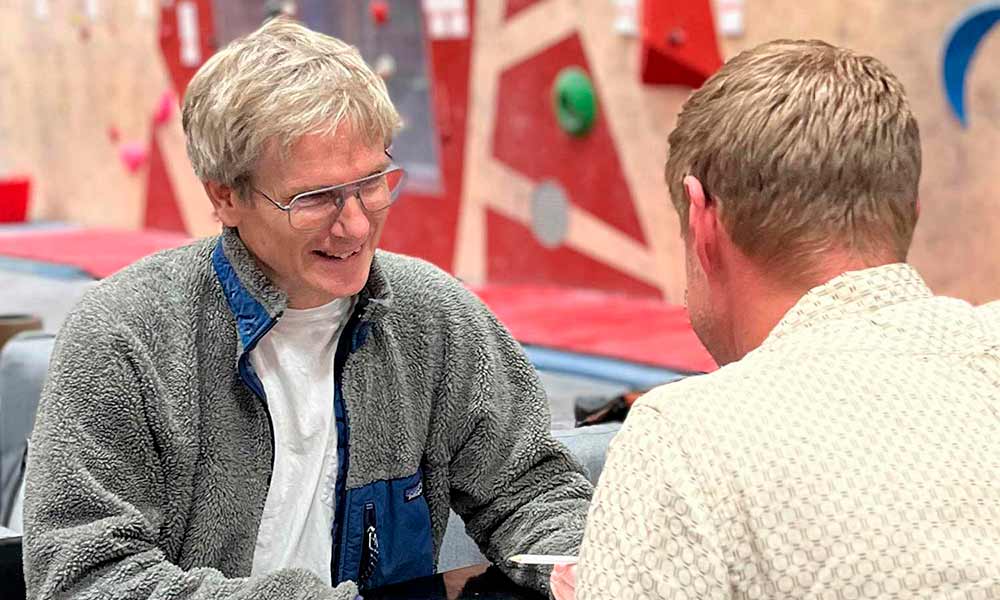We are passionate about encouraging more activity on climbing facilities across the country, and that is inextricably linked to safety and maintenance. Unfortunately, we often see that many climbing structures are not being inspected sufficiently, which significantly reduces both safety and the lifespan of the walls. We're working hard to change that. In this post, we provide a thorough introduction to the maintenance and inspection of climbing walls.
The operation and upkeep of climbing facilities require a systematic and structured approach that ensures both safety and technical performance. The applicable standard in Denmark—and across the EU—is DS/EN 12572-1:2017 for climbing walls and towers, and DS/EN 12572-2:2017 for bouldering walls. When advising our clients and performing service inspections across the country, we do so based on these standards.
First and foremost, you must comply with the requirements specified in the standard. In short, you should follow the inspection intervals provided by the manufacturer when the wall was constructed. If you built the climbing wall yourselves or no longer have access to the original operations and maintenance manual (which we often encounter), you should expect to have a main inspection carried out annually – this is the recommendation of all manufacturers today.
Operation and Maintenance Plan
You need a clear plan for how to maintain your climbing wall—whether it is located indoors or outdoors. Your maintenance plan should be structured into three levels: daily checks, a quarterly inspection, and an annual main inspection. Additionally, it’s recommended to keep a logbook where you document all repairs and the results of your quarterly inspections.
1) Daily Check
The daily inspection is carried out by the facility owners themselves. This routine visual inspection does not need to be documented, and in practice, it involves a quick safety check of the facility by a responsible person before climbing activities begin. These responsible persons could be instructors, teachers, wall supervisors, or facility staff.
Use the following checkpoints to guide discussions about what should be inspected and who is responsible:
- Cleanliness of the area
- Loose climbing holds
- Loose hangers/anchors
- Obstacles in fall zones
- Missing components
- Visible damage
- Wear on safety installations and equipment
For bouldering walls, you should also ensure that the fall padding is correctly positioned and that all joints are intact.

2) Quarterly Inspection – Operational Inspection
An operational inspection is a more thorough review aimed at assessing the stability of the climbing wall and wear on its components. To ensure a proper inspection, the following specific areas should be reviewed:
- Climbing holds – Check for secure attachment, wear, and defects. Replace damaged holds and tighten loose ones.
- Anchors – Ensure they are securely fixed. Tighten if the hanger can rotate. Chain links and carabiners should be inspected for wear.
- Belay points/hangers – Check for signs of wear.
- Moving wear parts, such as fixed slings attached to the wall.
- Overhanging wall elements, where ropes may wear against edges during climbing.
- Climbing equipment (PPE) – All personal protective equipment must be inspected.
Operational inspections must be performed at least every three months by a person with specific knowledge of the climbing wall, and they must be documented in a logbook.
Logbook example (you can download a Danish version here):

3) Main Inspection – Annual Safety Review
The annual main inspection is a comprehensive assessment carried out by a qualified inspector. This inspection includes both the front and rear sides of the climbing wall and provides an in-depth evaluation of the facility’s overall safety level, its foundation and anchoring, primary and secondary structures, joints, and the stability of the wall panels.
The main inspection should include:
- Visual inspection of the structural frame (rear side), including sampling of welds, joints, and construction details
- Verification that wall fixation complies with the engineer’s specifications
- Comprehensive inspection of the entire structure, including anchors and penetrations
- Check of all permanently installed safety equipment and any certifications
- Review of documentation for any repairs or component replacements
- Pull tests of top anchors and belay points as needed or upon request

The Advantages of a Service Agreement for Annual Inspections
At Gubbies, we perform more than 100 main inspections annually across Denmark. With a service agreement, you gain access to the expertise needed for a thorough review of your facility. We prepare a detailed inspection report that serves as a solid foundation for any follow-up work and ensures all aspects of your climbing facility’s safety and functionality are assessed. We also review the documentation provided when the facility was originally built.
Additionally, we are solely dedicated to the sport of climbing. This means that when we visit your site, we can also:
- Carry out minor repairs on-site. We bring tools and basic equipment so we can fix small issues with the wall or patch damage to your fall mats.
- Provide advice on challenges and opportunities for improving your climbing setup based on your specific needs.
By handling repairs during the inspection, we save travel time—making it more cost-effective for you 😊
For even more information on this topic head on over to this page
And don't hesitate to reach out if you have any questions or if you wish to receive a quote on a main inspection of your climbing wall, tower or boulder!


